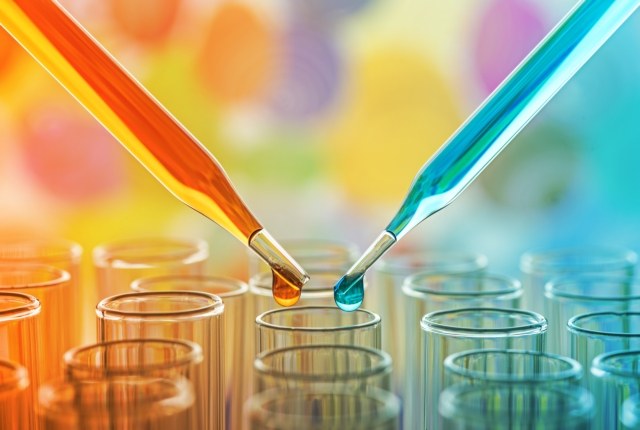For the first time, an international research group has developed a system able to quantify the non-equilibrium characteristics of any chemical reaction network. The results of this study could enable the development of new chemical systems with life-like properties, among which energy storing. Published in the Chem magazine, the research has been carried out thanks to an international collaboration involving the University of Bologna, the University of Strasbourg, the University of Maine and the Northwestern University of Chicago.
‘This study represents a significant step forward in our understanding of chemical phenomena far from thermodynamic equilibrium’, states Alberto Credi, professor at the Department of Industrial Chemistry ‘Toso Montanari’ of the University of Bologna and co-author of the research. ‘The results provide a new perspective on the central role of compartmentation in biology and on its significance in maintaining living organisms out of equilibrium conditions’.
As a matter of fact, from a chemical point of view life happens in non-equilibrium conditions, with systems that evolve apart from equilibrium, rather than towards it. Suffice it to think that when the chemical processes in a living organism reach equilibrium, the organism is dead. It seems crucial, then, to be able to know whether a chemical reaction is striving towards equilibrium or non-equilibrium.
‘An energy input – which is not intrinsically directional – can certainly move a chemical reaction far from equilibrium, but we are still uncertain about the direction of the movement’ explains Raymond D. Astumian, professor at the University of Maine and among the authors of the study. ‘The quantity that controls the direction of the movement is known as kinetic asymmetry’.
In spite of the significance of kinetic asymmetry, its calculation and application to artificial systems had until now been limited to very simple chemical reaction networks. However, for the first time, this new study made it possible to calculate kinetic asymmetry in complex networks as well.
This way, it is possible to accelerate the development of chemical systems that operate out of equilibrium. These are crucial to create materials characteristic of living systems and to develop new generation nanotechnologies.
‘For our research, which intersects experimentation and theory, we drew inspiration from biological systems using energy to perform directional movements’, says Giulio Ragazzon, professor at the University of Strasbourg and coordinator of the study. ‘Indeed, energy conversion at molecular level is a formidable challenge and an enormous opportunity’.
The significance and effectiveness of the results of this study were immediately proven by a collaboration with a second research group working at the Sichuan University, in China. The group was studying a complex molecular machine able to use light energy to move a molecular ring in non-equilibrium conditions. By applying the new theory to their problem, the Chinese researchers were able to unveil the functioning of this molecular mechanism, precisely calculating its non-equilibrium behaviour. The results – published in the Angewandte Chemie magazine – demonstrate the immediate impact of this new theoretical framework and its potential to open way to important innovation in nanotechnologies.
The reaching of this milestone was possible thanks to a long-lasting friendship and collaboration began at the University of Bologna. Indeed, two among the participants to the study – the coordinator Giulio Ragazzon, chemist at the University of Strasbourg, and the first author Emanuele Penocchio, postdoc researcher at the Northwestern University – met each other at the Collegio Superiore of the University of Bologna when they were students, and then continued their career with a PhD in the research group lead by Alberto Credi, another author of the study and currently Vice Rector for Research at the University of Bologna. Despite ten years having gone by since then, their enthusiasm for research has driven them to continue their prosperous collaboration to this day. This study marks their seventh shared project.
The study was published in Chem magazine under the title ‘Analysis of kinetic asymmetry in a multi-cycle reaction network establishes the principles for autonomous compartmentalized molecular ratchets’. The results obtained were the outcome of the work of an international team based in France, the United States and Italy. The team was composed of chemists and physicists, including Giulio Ragazzon and Ahmad Bachir (University of Strasbourg, France), R. Dean Astumian (University of Maine, USA), Emanuele Penocchio (Northwestern University, USA) and Alberto Credi (University of Bologna).

